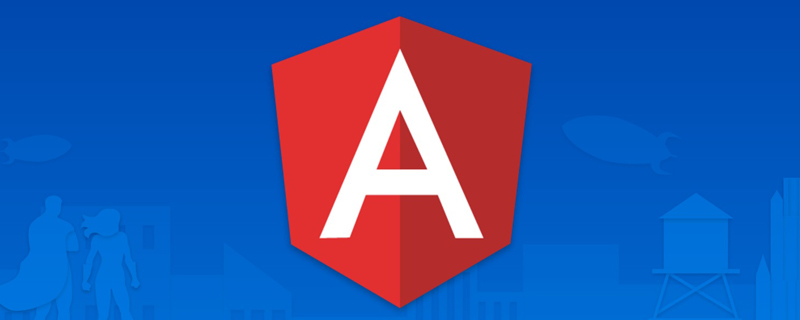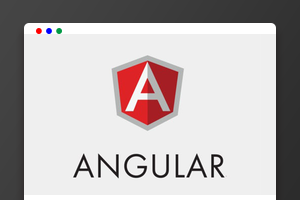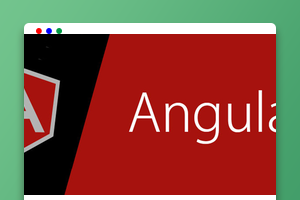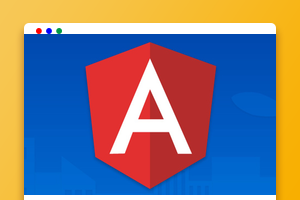组件化是Angular的核心概念,所以组件通信的使用就比较多而且很重要。
官方传送门:
https://angular.io/guide/component-interaction
https://angular.cn/guide/component-interaction
相关教程推荐:《angular教程》
父子组件通信
关键词 Input Output EventEmitter ViewChild
1、父组件 向 子组件 传递数据
【Input】
绑定属性的方式
父组件:
<!-- parentComponent --> <app-child [name]="'childName'"></app-child>
子组件:
// 子组件需要使用Input接收
<span>{{name}}</span>
@Input() public name:string = '';
2、子组件 向 父组件 传递数据
【Output EventEmitter】
子组件:
@Output() public readonly childEmit: EventEmitter<T> = new EventEmitter<T>(); this.childEmit.emit(data);
父组件:
<app-child (childEmit)="getData($event)"></app-child>
public getData(data:T): void { }
3、ViewChild 方法
因为我觉得这个方法既可以让父组件获取子组件的数据,又可以让父组件给子组件设置变量值等,所以我这里单独分了出来。
父组件:
<app-child **#child**></app-child>
<button (click)="**child**.print('---')">点击</button>
@ViewChild('child', { static: true })
public child!: ElementRef<HTMLElement>;
public print():void{
if(this.child){
// 这里得到child,可以使用child中的所有的public属性方法
this.child.print('hello2');
}
}
【示例】
// 父组件
import { Component } from '@angular/core';
@Component({
selector: 'app-parent',
template: `
<app-child #child [name]="name" (childEmit)="childClick($event)"></app-child>
<button (click)="child.print('hello1')">调用子组件的方法1</button>
<button (click)="print()">调用子组件的方法2</button>
`
})
export class ParentComponent {
public name:string = '大儿子';
@ViewChild('child', { static: true })
public child!: ElementRef<HTMLElement>;
public childClick(bool:Boolean):void{
// TODO
}
public print():void{
if(this.child){
this.child.print('hello2');
}
}
}
/*****************************************************/
// 子组件
import { Component, Input, Output, EventEmitter } from '@angular/core';
@Component({
selector: 'app-child',
template: `
<h3 (click)="myClick()">{{name}}</h3>
`
})
export class HeroChildComponent {
@Input()
public name: string;
@Output()
public readonly childEmit: EventEmitter<boolean> = new EventEmitter<boolean>();
public myClick():void{
this.childEmit.emit(true);
}
public print(content:string):void{
console.log(content);
}
}
非父子组件通信
1、Service
单例模式,其实就是一个变量,需要双向触发(发送信息 / 接收信息),及设置和获取数据都需要组件自己去处理。
service.ts
import { Component, Injectable, EventEmitter } from '@angular/core';
@Injectable()
export class myService {
public info: string = '';
}
组件 1 向 service 传递信息
import { Service1 } from '../../service/service1.service';
...
public constructor(
public service: Service1,
) { }
public changeInfo():void {
this.service.info = this.service.info + '1234';
}
...
组件 2 从 service 获取信息
import { Service2 } from '../../service/service2.service';
...
public constructor(
public service: Service2,
) { }
public showInfo() {
console.log(this.service.info);
}
...
真正的发布订阅模式,当数据改变时,订阅者也能得到响应,这里只举了BehaviorSubject的例子
// Service
import { BehaviorSubject } from 'rxjs';
...
public messageSource = new BehaviorSubject<string>('Start');
public changeMessage(message: string): void {
this.messageSource.next(message);
}
public getMessageSource(): Observable<string> {
return this.messageSource.asObservable();
}
/////////////////////////
// 发布
...
this.messageService.changeMessage('message change');
/////////////////////////
public
// 订阅 (记得根据需要选择是否取消订阅 unsubscribe)
this.messageService.getMessageSource().subscribe(m => {
console.log(m);
})
四种主题Subject对比
| rxjs subject | 是否存储数据 | 是否需要初始值 | 何时向订阅者发布数据 |
|---|---|---|---|
| Subject | 否 | 否 | 及时发布。有新数据就发布 |
| BehaviorSubject | 是。存储最后一条数据或者初始值 | 是 | 及时发布。有新数据就发布 |
| ReplaySubject | 是。存储所有数据 | 否 | 及时发布。有新数据就发布 |
| AsyncSubject | 是。存储最后一条数据 | 是 | 延时发布。只有当数据源complete的时候才会发布 |
其他通信方式
路由传值、浏览器本地存储(LocalStorage,SessionStorage)、cookie。
5种Angular中组件通信的方法介绍
—–文章转载自PHP中文网如有侵权请联系admin#tyuanma.cn删除
了解Angular中的变化检测(Change Detection)机制
转载请注明来源:5种Angular中组件通信的方法介绍_编程技术_编程开发技术教程
本文永久链接地址:https://www.ymkuzhan.com/752.html
本文永久链接地址:https://www.ymkuzhan.com/752.html
下载声明:
本站资源如无特殊说明默认解压密码为www.ymkuzhan.com建议使用WinRAR解压; 本站资源来源于用户分享、互换、购买以及网络收集等渠道,本站不提供任何技术服务及有偿服务,资源仅提供给大家学习研究请勿作它用。 赞助本站仅为维持服务器日常运行并非购买程序及源码费用因此不提供任何技术支持,如果你喜欢该程序,请购买正版! 版权声明:
下载本站资源学习研究的默认同意本站【版权声明】若本站提供的资源侵犯到你的权益,请提交版权证明文件至邮箱ymkuzhan#126.com(将#替换为@)站长将会在三个工作日内为您删除。 免责声明:
您好,本站所有资源(包括但不限于:源码、素材、工具、字体、图像、模板等)均为用户分享、互换、购买以及网络收集而来,并未取得原始权利人授权,因此禁止一切商用行为,仅可用于个人研究学习使用。请务必于下载后24小时内彻底删除,一切因下载人使用所引起的法律相关责任,包括但不限于:侵权,索赔,法律责任,刑事责任等相关责任,全部由下载人/使用人,全部承担。以上说明,一经发布视为您已全部阅读,理解、同意以上内容,如对以上内容持有异议,请勿下载,谢谢配合!支持正版,人人有责,如不慎对您的合法权益构成侵犯,请联系我们对相应内容进行删除,谢谢!






